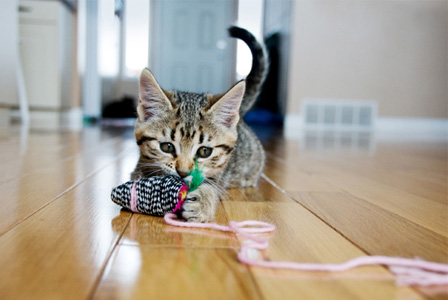How to Protect your Pets from Household Dangers

Pets at home can often get into trouble, especially when no one is around. Making sure that your pets do not harm themselves in any way is the first step towards becoming a better pet parent. There are numerous things that need to be taken care of in order to protect pets from household dangers. The safety measures you would need to take depend largely on the nature of your pet. This means that the safety measures for a dog would differ largely from the safety measures for a cat. However, there are certain measures which work equally well for all pets.
Instructions
-
1
There are number of houseplants which are poisonous for pets such as cats and dogs. Fiddle-leaf fig, Fruit Salad Plant, and Pencil Cactus are common examples of such plants. Be sure to remove all such plants from your home and garden.
-
2
If your pets often wander into your garage, make sure antifreeze is no where near them. Pets are attracted to antifreeze due to its smell and taste. However, if your pet ingests so much as a single drop of antifreeze, the result may be fatal.
-
3
If you treat your lawn with a pesticide on a regular basis, do not let your pets into the lawn because pesticides are very poisonous. You should always put up a warning sign in your lawn, warning others to keep their pets away from your lawn.
-
4
Chocolate can be poisonous for pets. Never make the mistake of feeding chocolate to a pet.
-
5
Pets that hunt, such as cats and dogs, can get poisoned if they hunt. For this reason, it would be a good idea not to allow your pets to hunt. Moreover, do not let your pets feed on bones because they can shatter and eventually choke your pets.
-
6
Pets have the tendency to chew on electrical chords. This means that there is a high risk of the pet being electrocuted. To prevent such an outcome, keep chords that carry electricity away from the reach of your pets.
-
7
Keep decorations that can topple over out of your pet’s reach. Moreover, keep medications you may have at home in a safe place; in short, treat your pet as you would treat your child.







